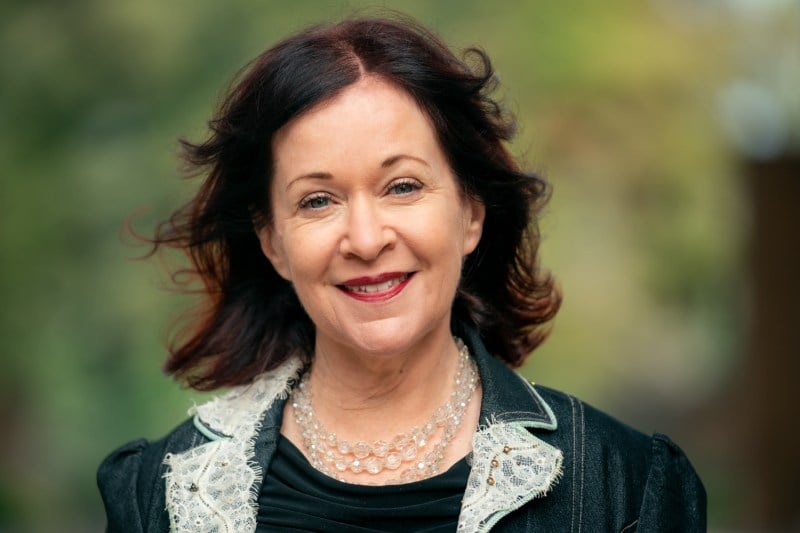Deborah Cullinan, the chief executive officer of Yerba Buena Center for the Arts (YBCA) in San Francisco, will assume the role of Vice President for the Arts (VPA) at Stanford University, starting Feb. 28. She is replacing Harry Elam, the now-president of Occidental College. Elam was Stanford’s first VPA; the position was created to support organizations such as Stanford Live, the Cantor Arts Center, the Anderson Collection, the Institute on Diversity in the Arts (IDA) and Stanford Arts Institute (SAI).
Cullinan has been an active figure in promoting the arts in San Francisco and the Greater Bay Area throughout her career. Under Cullinan’s guidance, the YBCA has seen changes towards intersectionality and equity, through initiatives like the YBCA100 list and guaranteed income pilot program for artists in partnership with the city of San Francisco to promote intersectional, community-driven art. Cullinan sat down with The Daily for a Q&A.
The Stanford Daily [TSD]: Given your involvement with the Bay Area art scene through your career, what prompted you to take the position at Stanford Arts?
Deborah Cullinan [DC]: Being the Vice President of the Arts at Stanford is an incredible opportunity to build on my long-standing commitment to the Bay Area arts ecosystem and become part of such a powerhouse educational and research institution — where we are asking the big questions and imagining the future in service of humanity and the planet.
It just feels extraordinary to think about how we can all work together to really center the arts as essential to thinking. I’m also very excited to be able to work with all of the arts organizations and initiatives — Stanford Live, the Cantor, the Anderson Collection, the Institute on Diversity in the Arts (IDA) and Stanford Arts Institute, to name a few — to really be able to lift those incredible endeavors and to create more opportunities for engagement.
TSD: How has your time with the YBCA shaped you today? How does it affect your priorities in artistic production and curation?
DC: One, it’s really bolstered my belief that we can change things. Two, it has really instilled in me that I am not here to be a curator or even a producer at this point. I’m here to help create the conditions for artists and curators and community members to come together and really create extraordinary experiences.
I’ve learned a lot about how important it is for people with very different life experiences, different backgrounds, different disciplines, different skills, to be able to come together and mash it all up. And that’s how we get better as a collective. So, you know, those are some of the things that I hope I can bring to Stanford and to all that’s already happening there.
TSD: How do you hope to continue this mission of equity now at Stanford?
DC: My work with the YBCA and intersection for the arts has been very much about how we address the systemic inequities and the racial injustice that exists in our systems and our structures.
What I’ve learned is that we can experiment and change things. It’s possible for a contemporary art center to reimagine its role in civic and public life and to really center equity. And it’s possible to believe that, in fact, we can shift resources and power. And we can reimagine structures, in order for our work, to be inclusive, to be equitable and to be really driving towards the health and well being of our communities.
I also have learned that collaboration is essential. And that’s collaboration across sectors, across generations, across communities; transforming the way we work isn’t a single person’s job. It’s really for all of us together to imagine what we want the art scene at Stanford to be.
As we know, the pandemic only laid bare what was already broken. It’s wonderful to see that people are taking issues of inequity and injustice in this country more seriously. But I think we have a long way to go. An institution like Stanford has such a big role to play.
TSD: What are your plans and vision for Stanford? How do you plan to engage with the student body and scholarship in this place? What can students expect to see under your leadership?
DC: My honest answer is, I have to listen and learn before I can say, “this is what we all want to do together.” The first steps are really to engage deeply with a student community, with faculty and with people in the surrounding community in order to understand what matters most and what are the urgent issues and opportunities.
I think that there are so many opportunities for students — whether you are studying art, engaging with art, or even not — for all of us to kind of come together and think about how do we want people who are studying at Stanford to be able to engage with the larger creative ecosystem? What role does Stanford want to play in the Bay Area?
In my opinion, it is the young people, the people who are studying who are the future who can make a difference. So if we’re going to try to build a future for the arts at Stanford, students have to be engaged. It’s not always clear: how do we create opportunities together for everyone to know what you’re invited to and what is available, whether it’s through Stanford Live, the Cantor or at the Roble Arts Gym? How do we make sure that all of this is really available to everyone?
What everyone can expect is a lot of listening and collaborating, and that I want to start by learning from all of you. I want to start by understanding what matters. What’s missing for you. What you hope for.
This interview has been condensed and lightly edited for clarity.
